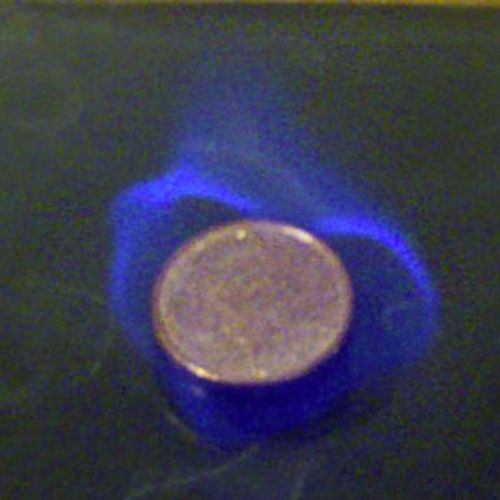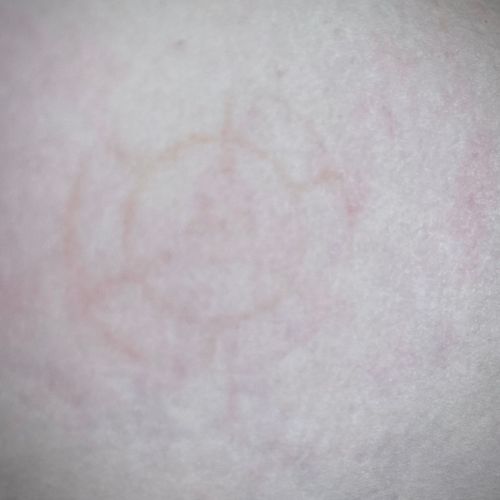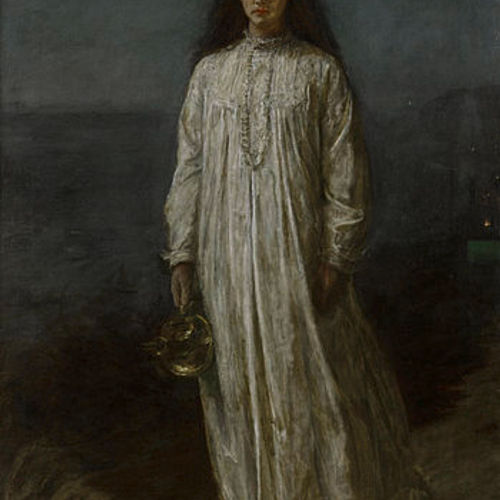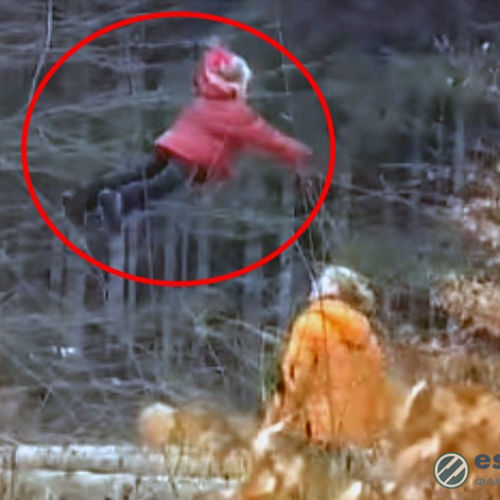
| Added | Tue, 04/10/2016 |
| Hierarchy | |
| Область распространения | All over the world |
| Характерные признаки |
→
→
→
→
→
|
| Sources |
Unlike extra-sensory perception, implying increased sensitivity to the environment and awareness of the information received, servodata involves conscious or unconscious manipulation of living organisms or objects without direct communication and without the use of special materials and devices. These phenomena often used the phrase "at a distance".
It can be attributed:
- Telepathy (from al-Greek. τῆλε – "far away" and πάθος "feeling") –the hypothetical ability of the brain to communicate thoughts, images, feelings and the unconscious state of the brain or other body directly at a distance without the use of any known means of communication or manipulation.
- Materialization – the ability to cause the appearance of the outside of the living matter of different degrees of consistency and level of organization, able to take forms of faces, limbs and human figures and objects, both complete and inchoate.
- Telekinesis (Greek. τῆλε and κίνησις, literally "motion at a distance"), or psychokinesis (Greek. ψυχή — "soul", "heart", "breath"; κίνησις) is a term used in parapsychology to denote the ability of a person with one only the effort of thought to influence physical objects.
This can be attributed to:
- pyrokinesis – the ability to cause a fire or a significant increase in temperature at a distance by thought, and the ability by the power of thought to control the fire.
- levitation – a phenomenon in which the subject without visible support "floating" in space (i.e., levitated) is not attracted to the surface (earth, water, etc.).
- teleportation of objects moving from one place to another instantly without existing in the intermediate points between them.
The above phenomena do not involve direct contact with the object or person, so the driving force of these phenomena is unknown.
Let us consider these phenomena in more detail.
Telepathy
Telepathy told in ancient times. According To N. Fodora itself "prayer may be considered as an attempt of telepathic communication with the Supreme being." In the same way proposed the idea that telepathy is the basis of intuition (e.g., intuitive likes and dislikes). The result of receiving and processing the brain's telepathic signal was considered to be the feeling of "look" or getting close.
Some researchers of the paranormal believe telepathy and suggestion, in cases when hypnosis is carried out at a distance, close phenomena. Myers called this phenomenon "telepathic hypnotism".
Still, some researchers believe that the phenomenon of telepathy not only exists in the human community, but also as the principle of information transmission between animals or between animal and man.
Attempts to explain the phenomenon
Since the XIX century there have been several theories that attempt to explain this phenomenon. One of the most popular theories was the so-called "wave theory". One of her supporters was sir William Crookes, the alleged existence of some "ether" waves of small amplitude and greater than the gamma radiation frequency, which, "penetrating" the human brain can cause in the brain of the recipient image, similar to the original.
Several hypotheses regarding the possibility of direct transmission of thought from one person to another developed by Sigmund Freud. He considered telepathy a rudimentary means of communication between people and possible "physical process, which was mental at the two ends of the communication chain." Freud's attitude towards telepathy was ambivalent. On the one hand, he saw it as a direct path leading to the depths of the subconscious, on the other – belonged to the phenomenon carefully for fear that experimenting with it analysts run the risk of being put on a level with the occultists.
Issues related to telepathy he was also interested in Carl Jung and Sandor Ferenczi.
Despite the interest in this phenomenon, scientists and researchers developed many theories of varying degrees of scientific, but convincing evidence for the existence of telepathy does not exist yet.
Psychokinesis
Psychokinesis is a term that combines any (macro and micro) phenomena connected with the impact of thought on matter, including: telekinesis, pyro - and creatines, Aero - and gerakines, biochemicals, teleportation, "milligray" (thoughtography), levitation, etc.
The term "telekinesis" was first used in the 1890 Russian paranormal investigator Alexander N. Aksakov. The author of the term "psychokinesis" is an American author and publisher of Henry Holt ("On the Cosmic Relations", 1914); it was popularized by American parapsychologist J. Ryan in 1934. Both concepts are at various times described and other terms: "remote influence" (eng. distant influencing), "remote influence thought" (eng. remote mental influence), "direct conscious intent" (eng. direct conscious intention), "thought to control matter" (eng. mind over matter), etc.
Supporters of the reality of telekinesis argue that this phenomenon has been known since antiquity and is mentioned in the Bible, particularly in Acts (release of SV. Paul and Silas, 16:19-40). Subsequently, in parapsychology it has been assumed that the elements of psychokinesis way or another could be present in the methods of imposition of curses, casting of magic spells and predicting the weather. In the same category a include the evil eye.
Attempts to study the phenomenon
In the thirties of the study of psychokinesis has become the fastest growing area of parapsychology. The first consistent study of psychokinesis began in 1934, Joseph B. Ryan of Duke University in North Carolina. First, in the observation got a player who claimed that able you to stack the dice so that they were given the right amount and combination.
Before 1940, the phenomenon of psychokinesis, mainly "observed" in séances in darkened rooms, where it was almost impossible to provide strict scientific control. After Rayna experiments moved into the lab. The studied phenomena are divided into two categories: macropsoides and microbicides (weak, do not register to the naked eye, the effects that require statistical processing), and the second of them turned out to be the center of attention.
After experimenting rein for half a century he has published more than 150 reports of the independent studies of the phenomenon. The vast majority of cases, the authors argued that did observe an effect that could be interpreted as psychokinesis, but quantitatively deviations from the norm seemed very small.
In 1989 psychologists Diane Ferrari and Dean Radin of Princeton University developed a technique of applying meta-analysis in relation to the obtained results of the experiments to eliminate the element of chance and to reveal the General for all cases trend.
Approval Radin and Ferrari results in the total processing of data obtained after 2.5 million throw of the dice (with participation of 2,5 thousand people) indicated a slight (less than 1% ), but statistically confirmed the variation in the impact of the object thought. This result, according to the researchers, pointed to the reality of the phenomenon of psychokinesis.
We see that in the majority laboratory experiments have yielded conflicting results and the reality of the existence of this phenomenon is still not proven.
Materialization
The majority of the term "materialization" can be found at the mention of mediums in séances, but sometimes it is used in other cases.
According to "the Encyclopedia of parapsychology and the occult", the term "materialization" was first used in 1873 in the United States; that in relation to the phenomenon uses the expression "spiritual forms".
Considered to be the earliest mention of the phenomenon in the book "Recherches psychologique ou correspondence sur le magnetisme vital entre un Solitaire et M. Deleuze," where Dr. John. P. Bello described the incident that occurred on March 5, 1819, when in the presence of the "three sleepwalkers and one blind woman" in a locked room came an envelope with "messages from the saints", allegedly brought by a white dove.
Attempts to study the phenomenon
The first famous representative of the science, taking up the study of the phenomenon of materialization, became at the beginning of 1880-x years sir William Crookes. Being a witness of unusual phenomena occurring in the sessions, Florence cook, he offered her to stay in the London house on Mornington road and began to hold regular sessions here (at first in the dim twilight, and then in natural light), inviting their friends from the academic world and regularly publishing reports on their observations in the "Quarterly scientific journal".
In 1874, a scientist published a report about working with cook (and also with two other famous mediums Kate Fox, and D. D. Hume), in which he stated that he witnessed a genuine materialization phenomenon in its different manifestations. The publication caused a scandal in the scientific world. Crooks almost lost the title of honorary member of the Royal society, but did not renounce their claims, remaining faithful to them until the end of his life.
It was believed that to materialize, you can not only small inanimate objects, but also plants, animals and even humans.
On the nature of apporte (and indirectly the phenomena of materialization), it was proposed two main theories:
- "the fourth dimension" (it was first advanced by the German Professor Zollner in an attempt to explain the phenomenon of the "interpenetration of matter", which, it was argued, was observed at the sessions of the medium Henry Slade);
- "the disintegration of matter" (rend Sudre suggested that the brain of the medium has the ability at the molecular level to dematerializing physical objects and then produce "reverse Assembly").
In 1920-years in parapsychology there was a third theory, designed to explain the phenomenon of physical mediumship and relevant to the concept of "thought forms" (borrowed from the occult). According to this hypothesis, physical mediumship a certain predefined process, enabling the medium to objectify (taking in space) thoughts and images — both own and borrowed from others. One of the first this explanation was suggested by sir William Barrett.
Representatives of science in the vast majority deny reality and the very possibility of the phenomenon of materialization and believe that the only explanation for this phenomenon could serve as a good level of proficiency in the subjects the technique of illusionism.
There are relatively well-studied developing skills of influencing people, involving verbal or non-verbal interaction:
- Suggestion (lat. suggestio - suggestion) — psychological impact on human consciousness, in which there is an uncritical perception of beliefs and attitudes. Is a specially formed verbal (and sometimes emotional) design. Often confused with telepathy when the human influence is not apparent.
- Hypnosis (al-Greek. ὕπνος sleep) – an altered state of consciousness, simultaneously combining signs of waking, sleeping and dreaming. Hypnosis allows you to simultaneously exist in mutually exclusive States of consciousness. In the state of hypnosis the subject can hear addressed to his words without criticism, i.e., it increases suggestibility. Here he is listed as a method of influence on the individual.
- Illusionism is an art form, which is characterized by the use of sleight of hand, gimmicks or special equipment to create the illusion of breaking the normal physical properties of the well-known items. The name comes from the French word "Illusionner" — "to mislead".
These abilities are quite common, but in the perfection of their own units, and masterly they can be mistaken for super powers. Causes, methods and results of such influences are known and relatively well documented.
Translated by «Yandex.Translator»
Phenomenon in mass culture
Phenomena
Related versions
Related facts
Related news
Related articles
Log in or register to post comments













